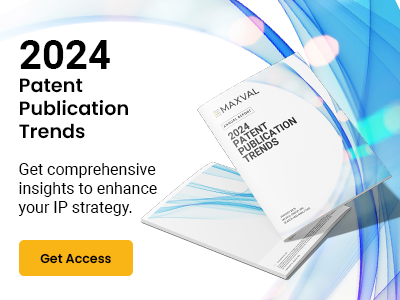Software to manage the entire patent and trademark lifecycles is certainly not a new idea. Legacy providers have been at it for years, although many still offer entirely separate systems to manage innovation and renewals.
Streamlining IP processes around disclosures, filing, docketing, and ongoing management has enabled organizations to gain efficiencies and ensure that valuable IP is captured, protected, and appropriately monetized.
But what about all of the other IP-related data? For trademarks, that includes data from domain name registrars, brand protection providers, and contract management systems. And for patents, which could include data contained within product databases, revenue management systems, and much more.
What if you could truly gain a 360-degree view to understanding how, where, and by whom your IP was being used and the associated costs or revenue generated?
For the most part, companies have been forced to manually gather data from disparate systems to get the information needed to make data-driven decisions regarding prosecution, protection, enforcement, litigation, licensing, and budgets.
In the past, trying to create a consolidated view of IP across the enterprise often involved batch importing of data into databases (which was almost immediately obsolete) or time-consuming and expensive projects requiring customized software development.
Over the last few years, a dramatic transformation has occurred, and SaaS providers are now making data available via Application Programming Interfaces (APIs). APIs allow different software applications to communicate with one another and share data or services – quickly, easily, and in real time.
Of course, in IP, APIs are really only beneficial if they can be easily integrated with IP Management systems. Unfortunately, many legacy IP Management systems cannot take advantage of these APIs without time-consuming and costly custom development.
Unlike most legacy systems in use today, Symphony™, MaxVal’s end-to-end IP Management system, leverages the Salesforce lightning platform to manage the entire IP lifecycle from innovation and prosecution to renewals and portfolio optimization. The Salesforce platform is widely regarded as the most secure, reliable, and scalable hosted platform in the market today.
Third-party APIs can be easily integrated into the Salesforce platform, providing better access to data from across the enterprise. And with robust searching and reporting, IP professionals using Symphony can quickly and intuitively access the data needed to make informed decisions.
Clearly, technology has caught up with the vision. The question that all IP practitioners should ask is, ‘Does my legacy IP Management system take advantage of these widely available APIs and the valuable information they provide?’ If not, what important information needed for critical decisions am I missing? Can I view data from third-party systems such as a domain name registrar, brand protection vendor, contract management system, product database, or revenue management system from within my IP Management system? And if you can’t, maybe it’s time to reevaluate your current approach.




